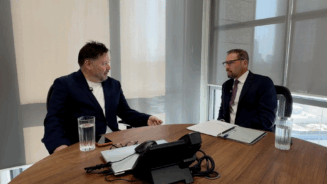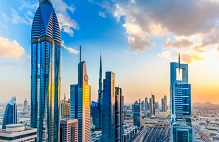Iran’s historic nuclear deal and the lifting of sanctions should bring the country back into the global community. For investors, it is being heralded as the return of the largest economy to the global system since the breakup of the USSR in 1991.
On a recent fact-finding visit to the country prior to the lifting of sanctions what we found was a real eye-opener and exposed many of our biases as wrong.
Iran appeared more like Turkey than Saudi Arabia – Tehran being a very cosmopolitan city with a much more liberal attitude than we expected, with women appearing fully integrated into society.
Importantly, the country is educated, entrepreneurial, and asset rich, but remains cash flow poor because of the sanctions that have been in place since 1979. With those sanctions being lifted, there is much to like as an international investor.
"We believe there is money to be made for first movers coming into the market in early 2016."
Strong fundamentals
Iran is well documented to be the world’s largest holder of oil and gas reserves combined – at number four in oil and number one in natural gas. The IMF sees Iran boosting global oil production by 600,000 barrels per day (bpd) in 2016, based on the rollback of EU and UN sanctions, rising to 1.2 million bpd over the medium term. That would be equivalent to approximately half of global oil demand growth in 2016.
Iran also boasts a large and young population, with 60% under the age of 30. Its workforce is well-educated, with the third-highest number of engineering graduates after the US and Russia. It also has the highest literacy rate in the Middle East and North Africa region.
As for the economy, Iran is the second-largest in the MENA region after Saudi Arabia, with a GDP of $406.3bn (£281bn, €361.7bn) in 2014. This is roughly the same size as Thailand. Now that sanctions have been lifted before the beginning of the 2016 Iranian calendar year in March, the World Bank projects real GDP could rise from 1.9% in 2015, to 5.8% in 2016 and 6.7% in 2017.
In addition, inflation has dropped from a peak of 45% in 2012 to the low teens today due to tough monetary policy.
The state of financials
Longstanding state involvement and weak governance combined with several years of sanctions has left the banking sector in a relatively weak state.
The banks we met with were heavily exposed to non-core assets in areas such as real estate, franchises and equities – likely due to restricted investment alternatives imposed by sanctions.
The banking system does cause concerns as it is undercapitalised and has a high rate of nonperforming loans, and there is no plan for recapitalisation yet.
However, there is a lot of interest from foreign capital, and many of the Iranian banks are already talking to international banks.
The Tehran Stock Exchange (TSE) operates two exchanges, with 540 listed companies on the main bourse, $120bn market cap, $40bn turnover volume per day, and a somewhat staggering 107 brokers. The daily limit up/down is set at 5%. ETFs were launched in 2013, and 11 are currently listed on the TSE.
The index trades at 6x P/E (having been as low as 4x to 5x P/E) and an average dividend yield of 14%, but with negligible foreign participation. A huge government-led privatisation drive in 2006 put a wide range of corporates back into the private sector. The top 10 listed companies account for 50% of the TSE’s market cap, with seven of those having been registered as part of the government privatisation programs.
The oil and mining sector dominates the economy and the stock market and is desperate for capital/foreign cooperation. Therefore, there is a narrow, rich seam to play in the stock market, and it may be a crowded trade.




